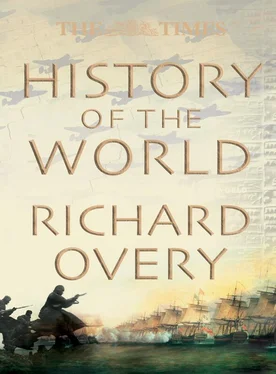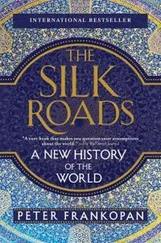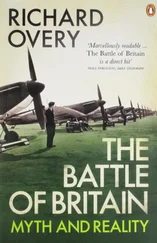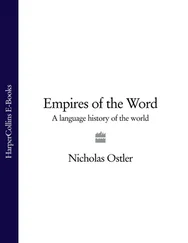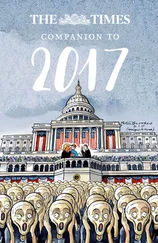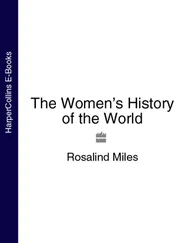TO 31 BC
THE EXPANSION OF ROMAN POWER
Rome, a city-state governed by aristocratic families leading an army of peasant soldiers, came to control an empire that stretched from the Atlantic to the Euphrates and from the English Channel to the Sahara. But military success brought social disorder; rivalries between warlords led to civil war; and republican institutions became an autocracy.
The city of Rome grew up on the Tiber at the lowest point the river could be bridged. Although several of Rome’s hills were settled from around 1000 BC, the earliest signs of urbanization date from the 7th century. According to tradition, Rome was ruled by a line of seven kings, and the expulsion of the last of these in 511 BC resulted in the creation of a republic ruled by two annually elected consuls or magistrates. It is probable, however, that the government of the emerging city-state was less formalized than tradition suggests and that republican systems reached their developed form only in the 4th century BC.
Consuls held office for no more than a single year and ruled with the support of the Senate, a council of former magistrates and priests. Legislation proposed by them had also to be ratified by a popular assembly. However, their main task was to protect the city, which in effect meant to lead military campaigns. Success in war brought material gains to the people of Rome and prestige to the commanders making imperialism an inevitable feature of Roman policy.
THE PUNIC WARS
By 264 BC Rome controlled the whole of the Italian peninsula and had emerged as a powerful confederacy and the principal rival to the other major power in the western Mediterranean, Carthage. The Romans were forced to develop naval skills to defeat Carthage in the First Punic War (264–241 BC), in which Rome drove the Carthaginians out of Sicily; soon after Corsica and Sardinia were seized as well. In the Second Punic War (218–201 BC), Rome was invaded from the north, when Hannibal brought his army and elephants from Spain over the Alps into Italy. Though Rome suffered devastating defeats at Lake Trasimene (217 BC) and Cannae (216 BC) it was able to draw on great reserves of Italian manpower to drive Hannibal out of Italy and defeat him at Zama in north Africa (202 BC). With Spain added to Rome’s provinces, the city now commanded the whole of the western and central Mediterranean.
EXPANSION TO THE EAST
In the following 50 years, Roman commanders turned their attention eastwards, leading expeditions into Greece, but withdrawing their troops once victory was assured, in part from fear that Italy, always most vulnerable to attack from the north, would be invaded. Nonetheless, in 146 BC Macedonia was added to the empire, with the province of Asia following in 133 BC.
Among the consequences of Roman victories abroad was an influx of goods and people into Italy. Works of art were taken from Greek temples to adorn private Roman villas, while Greek literature, rhetoric and philosophy had a profound effect on the nature of Roman politics. Wars also provided cheap slaves, who were brought to Italy as agricultural labourers, threatening the livelihoods of Italian peasant farmers and leading to the rapid growth of the urban population of Rome itself.
FROM REPUBLIC TO EMPIRE
The period from 133 BC saw increasing turbulence within Rome and Italy. Rome’s continuing expansion provided opportunities for ambitious men to use their military commands to dominate Roman politics, and the institutions of the republic were powerless to regulate the competition between them. Slave revolts and the Social War with Rome’s Italian allies (91–89 BC) increased disorder within Italy. The last generation of the republic saw the system collapse in a series of civil wars which ended only in 31 BC when Octavian emerged triumphant at the battle of Actium and found himself in a position of such dominance that he was able to rebuild the government of Rome and make it capable of administering an empire.
31 BC TO AD 235
THE HEIGHT OF ROMAN POWER
Augustus, the first emperor, transformed the government of the Roman empire. He brought an end to internal conflicts and created a standing army to guard the empire’s frontiers and extend its power. As Roman culture and organization spread throughout the empire, it laid the foundations for the development of the Mediterranean world.
In 31 BC Octavian, the future emperor Augustus, was undisputed master of Rome. His popularity as adopted son of Julius Caesar and victor over Cleopatra and Mark Antony at the battle of Actium allowed him to rebuild the shattered Roman republic into a system of government capable of controlling a vast empire, reforms which were to bring Rome a new and intense surge of life and two and a half centuries of almost uninterrupted peace and prosperity.
Augustus’s reforms were far-reaching. He restored the prestige of the Senate, though not, in practice, its influence. He reorganized the army and, in 27 BC, took command of those parts of the empire where legions were stationed. From then on responsibility for the defence of the empire lay with the emperor alone. At the same time he took the religiously significant name Augustus, and stressed his relationship to the now deified Julius Caesar. Among his many priesthoods was that of Pontifex Maximus, chief priest, and from the time of Augustus onward the emperor became the focus of all Roman religious ritual.
In 19 BC Augustus was given the power to rule by decree, and although he continued to pay due respect to the Senate, whose members he needed to command the legions and to administer the provinces, his authority was now absolute. The vast wealth he had inherited and won (his defeat of Antony and Cleopatra left Egypt as his personal domain) was further increased by bequests from the rich throughout the empire. At his death his property was worth thousands of times as much as that of even the richest senator. That his heir should also inherit his position as head of the empire was inevitable.
In the event, Augustus had great difficulty in finding an heir, eventually settling on his stepson Tiberius (AD 14–37), who had been a successful military commander but took on the role of emperor with reluctance. Neither he nor his successors were able to maintain good relations with the Senate, and the failure of Nero (54–68) to prevent revolt in the provinces led to his enforced suicide and the end of the Julio-Claudian dynasty. After a year of civil war, Vespasian (69–79) restored order. He was succeeded by his sons, Titus (79–81) and Domitian (81–96). Though the latter was generally regarded as a cruel and probably insane tyrant, many of his imperial policies were adopted by his successors, especially Trajan (98–117), who began the practice of appearing before the Senate not in a toga but in the purple cloak and armour of a triumphant general. This was to become the uniform of the emperor for the next thousand years.
STABILITY AND STRIFE
Domitian’s assassination was followed by nearly a century of stability as emperors without sons of their own chose their successors from the Senate. Civil war returned in 193, from which Septimius Severus (193–211) emerged victorious. He ruled with his sons Caracalla (198–217) and Geta (209–12), setting a pattern that was to be followed in the following centuries. Caracalla was murdered, and after him came a series of short-lived emperors, of whom Severus Alexander (222–35) was the last who could claim a dynastic link to his predecessors.
THE NATURE OF ROME
The emperor’s figure was central to the empire: everywhere statues and coins were constant reminders of his presence. In the former Hellenistic kingdoms the kings had been the objects of religious worship, a practice which continued with the cult of the emperors. In the western provinces, temples and altars dedicated to the emperor became focuses of Romanization.
Читать дальше
